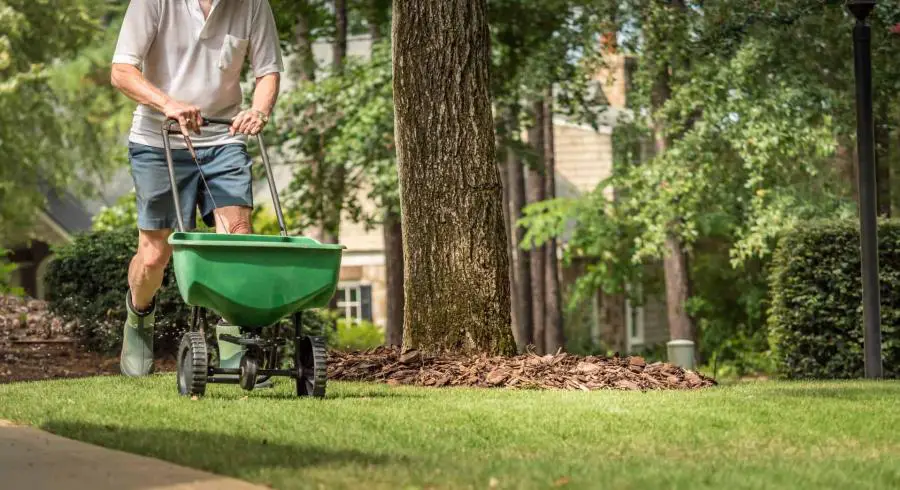Spreading compost on your lawn is one of the best things you can do for it.
A layer of topdressing will provide the soil below with valuable nutrients to keep your lawn looking lush, green, and weed-free. Topdressing a lawn with compost will also help the soil retain moisture over the summer months, reducing how often you need to water.
So we’re agreed you want to spread the compost – but how? Can you put compost in a regular yard spreader? Or do you need something else? Read on to find out the best way to spread compost on a lawn.
Can you put compost in a drop spreader?
Standard drop spreaders are designed to handle small dry materials like seeds or granulated fertilizer. We don’t recommend putting compost in a drop spreader because the openings are too small to spread backyard compost effectively. Also, compost tends to be wet and clumpy and quickly clogs the spreader.
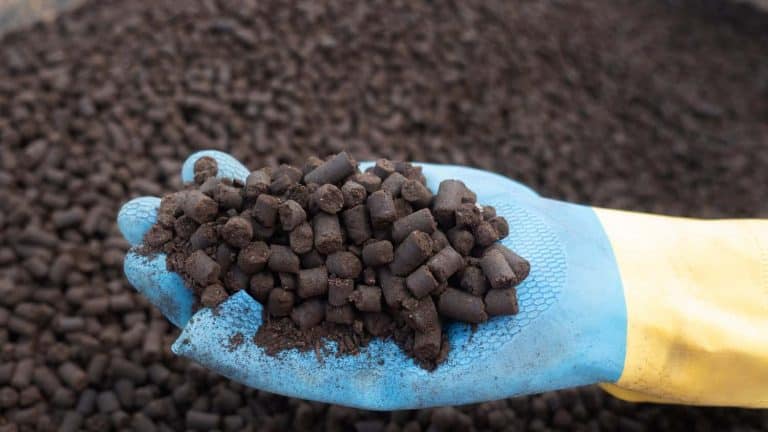
If you can find pelletized compost, this would be suitable for a drop spreader. However, it can be quite hard to get hold of, and it’s always best to use homemade compost where possible.
Very dry and fine compost might also be okay, but you would have to spend a lot of time pre-preparing it and making sure there are no clumps that could block the spreader.
How to spread compost on a lawn?
So if you can’t use a drop spreader, what can you use? Here are four effective methods you can use to spread compost on your lawn.
The shovel and rake method
The old school shovel and rake method might be labor-intensive, but it’s cheap and effective if you have a small yard.
Fill a wheelbarrow up with your compost and shovel it in piles around your yard. Then get a rake or a broom and spread the compost out evenly, so it covers the entire lawn.
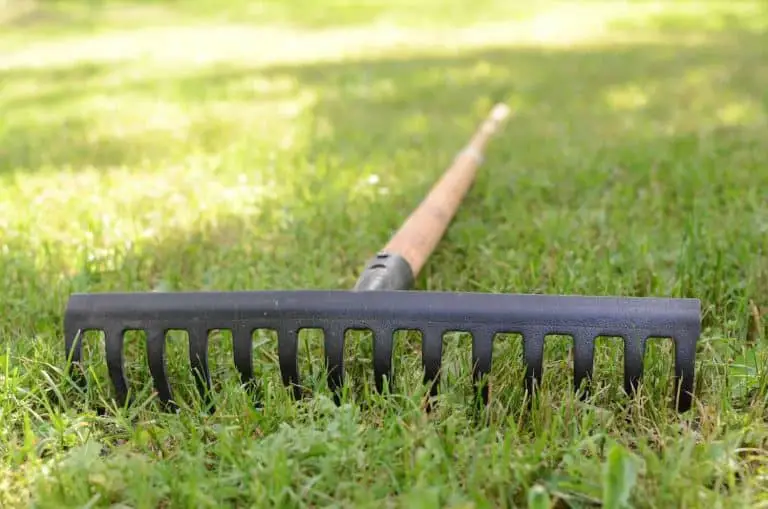
The best type of rake to use for spreading compost is a landscape rake. The broad head means you can spread the compost in a single pass, and the strong tines work the compost down into the grass to maximize contact with the soil surface.
Use a compost spreader
Instead of trying to use a lawn spreader to spread your compost, you could invest in a dedicated compost spreader.
Compost spreaders require a lot less manual work than the shovel and rake method. The only slight niggle we have with them is that the more affordable options tend to have small capacities, so you’ll find yourself filling them up quite often.
There are a few different types to pick from, depending on your needs.
Compost wheels
Compost wheels are big wire cages that you put the compost in, and as you roll it around the lawn, the compost falls out and onto the grass. These are the cheapest option if you want a dedicated compost spreader.
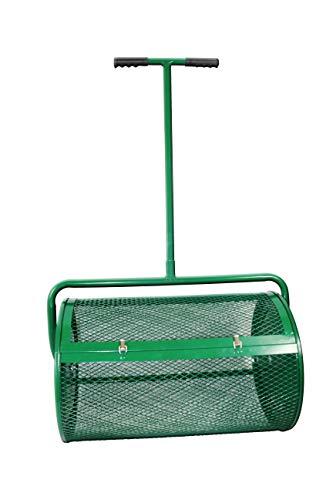
There’s no need to pre-screen the compost when you use a Landzie compost spreader because it breaks up any clumps as the compost tumbles around in the cage. Any larger pieces of debris won’t fit through the mesh and get left behind in the drum. It will work with compost, peat moss, and any other fine topdressing material.
The whole thing is made of steel, so it’s very durable, and the handles are covered in soft plastic grips, meaning it’s comfortable to use. We find that it’s best to only to fill it ¾ of the way full. If the drum is too full, it becomes much harder to roll.
Push compost spreader
Earth and Turf’s push spreader might look a lot like a drop spreader, but it’s been specifically designed to deal with more compacted materials like compost.
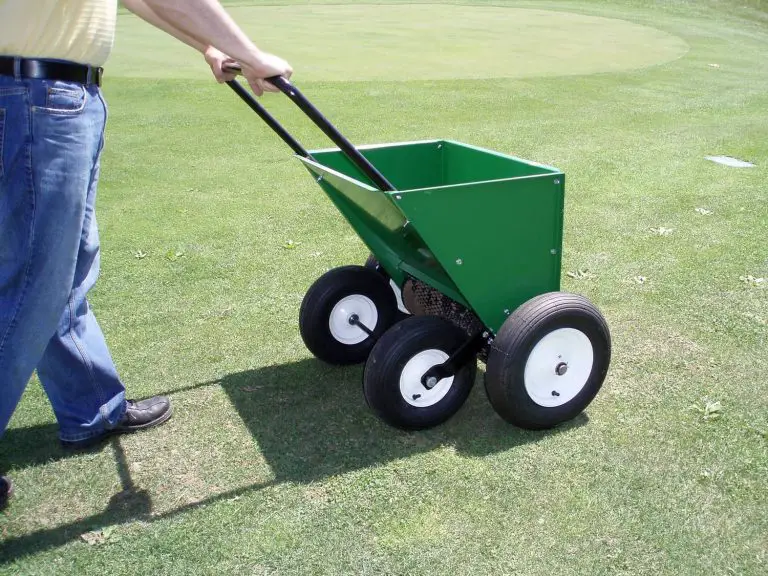
You can adjust the speed at which the material is spread out, giving you good control over how thick the layer is. Pictured is their smallest model, but they also have tow-behind or self-propelled options, which are better if you have a large area to cover.
EcoLawn is another company that sells similar products.
Manure spreaders
This last option is actually a manure spreader but will also deal well with compost.
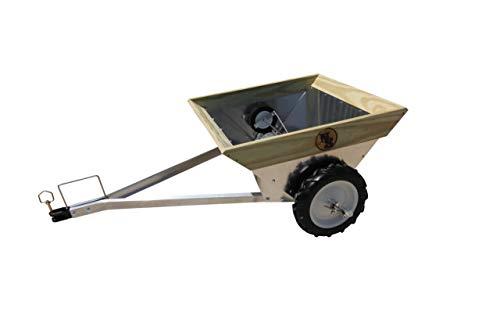
It can break up any compost balls with ease and works quickly and accurately, even with wet compost.
None of these machines are cheap, especially if you’re using them for residential applications, but they’re built to last and can make your life a lot easier. If you have a neighbor who’s also looking for an efficient way to spread compost, you could always share the cost with them to make it more economical.
Make compost tea
If you have a really big lawn and not much compost, then compost tea is the perfect solution.
Compost tea, or worm tea if it’s made with worm castings, turns your compost into a liquid form that’s easy to apply and multiplies its nutritional value. A little bit of compost can go a long way as compost tea.
To make compost tea, you steep your compost in water and add food for the microbes. As the microbes feed, they reproduce by the millions turning the water into a concentrated mix of beneficial fungi and bacteria.
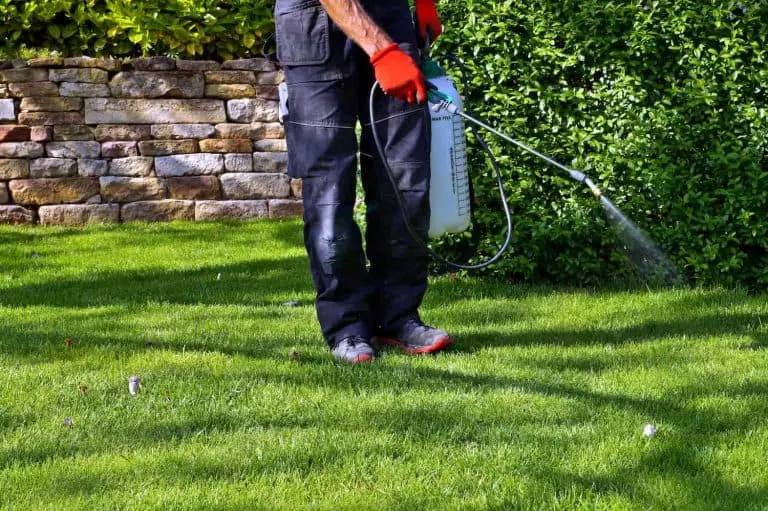
Once the tea is ready, you can fill a pump sprayer and apply it all over your lawn. Using a pump sprayer, the job should be done in a few minutes.
The liquid compost will seep into the soil and provide all the benefits of regular compost. You can also use the compost tea as a foliar spray on your vegetable gardens and plants so you can fertilize your whole yard in one go.
Hire a compost blower
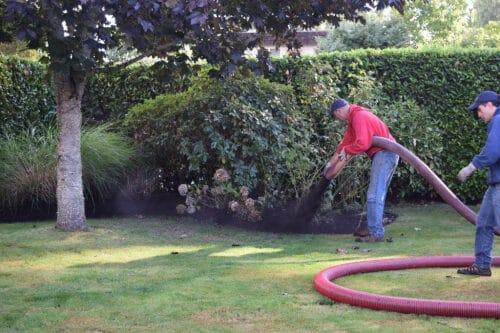
In some areas, you’ll be able to find a compost blowing service. They use blowers to spread a topdressing of your choice, including compost, over your lawn. The blowers they use are lightweight, low impact spreaders, so it’s easy to ensure an even spread, and they won’t damage your lawn.
Tips for spreading compost on lawns
Whatever method you use to spread topdressing on your lawn, there are a few best practices to follow. These tips will help make sure that your top dressing is as effective as it can be.
- Mow the lawn as short as possible before to give the top dressing the best chance of connecting with the soil
- Before you top dress a lawn rake up any dead grass and debris. Then, dethatch and aerate if you haven’t done so recently. This will ensure all the nutrients from the organic material can easily make their way into the soil.
- Never spread more than ¼ of an inch of topdressing at any one time. While compost won’t burn your lawn if you apply too much, the grass still needs to be visible through the layer of topdressing. If you bury the grass, then it will likely die prematurely.
When’s the best time to spread compost on a lawn?
The best time to topdress your lawn depends on the type of grass you have.
For warm-season grasses, you should topdress in the spring, and for cool-season grasses, topdress in the fall.
Spread the compost a few weeks before extreme heat or frost sets in to give the compost a chance to mix well into the soil.
You can combine top dressing with other essential lawn maintenance, such as overseeding or smoothing your lawn.
Summary
So it’s not a good idea to use a drop spreader to topdress your lawn with compost, but there are plenty of other options.
Our personal favorite is the compost tea and pump-sprayer option. It requires the least amount of manual work and uses the least compost, so we have plenty left to use in other parts of the yard.
